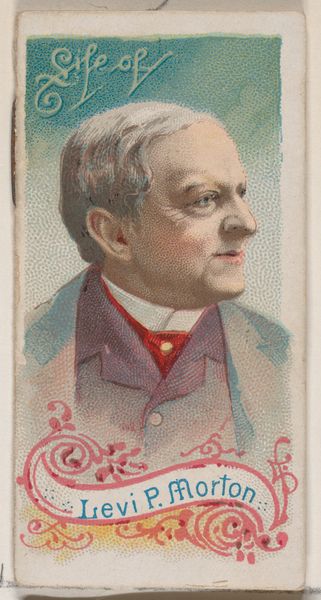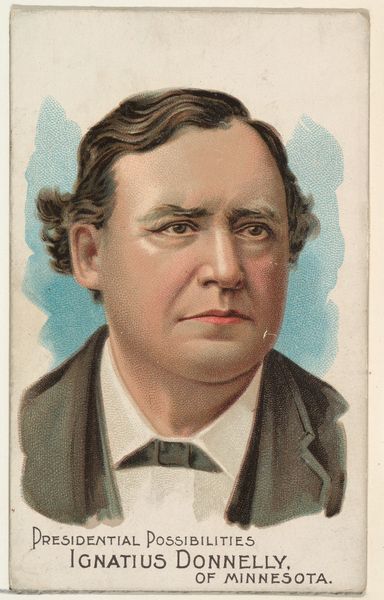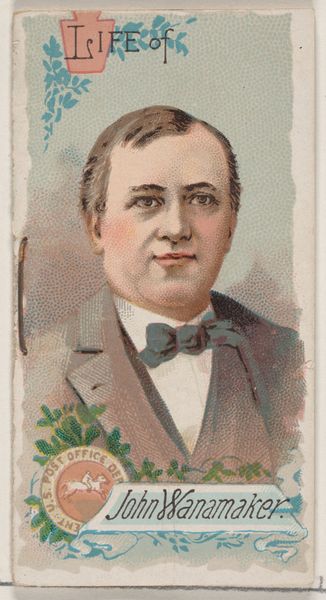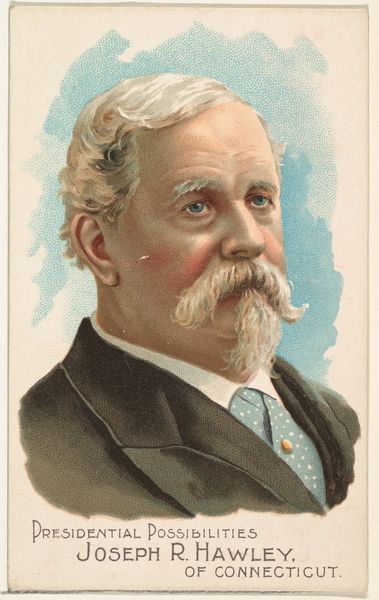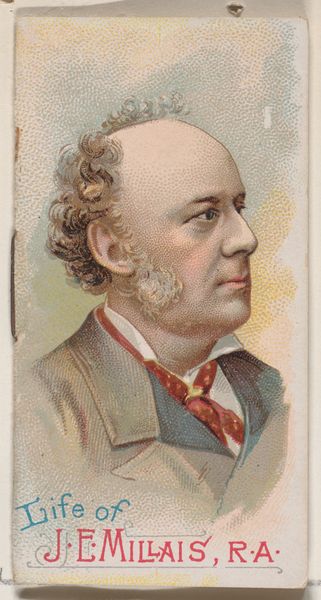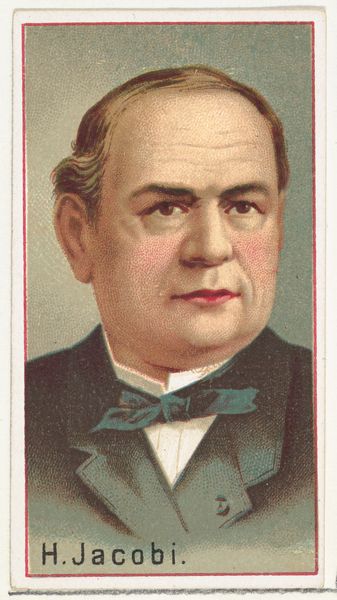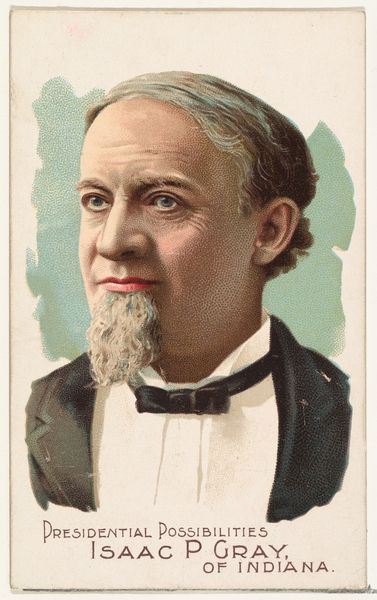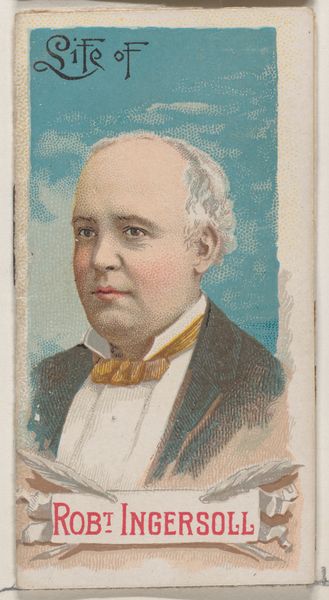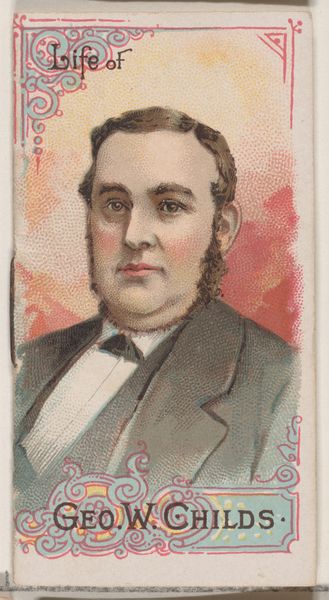
Life of P.T. Barnum, from the Histories of Poor Boys and Famous People series of booklets (N79) for Duke brand cigarettes 1888
0:00
0:00
drawing, coloured-pencil, print
#
portrait
#
drawing
#
coloured-pencil
# print
#
oil painting
#
coloured pencil
#
genre-painting
#
watercolor
Dimensions: Overall (Booklet closed): 2 3/4 × 1 1/2 in. (7 × 3.8 cm) Overall (Booklet open): 2 3/4 × 2 7/8 in. (7 × 7.3 cm)
Copyright: Public Domain
Editor: This is "Life of P.T. Barnum," from 1888. It's a coloured-pencil print, part of a series of booklets packaged with Duke brand cigarettes. It's quite small and delicate. What do you see in it? Curator: This image speaks volumes about cultural memory and how we choose to represent individuals who embody particular values. Consider P.T. Barnum, a master of spectacle and illusion, reduced to a pocket-sized portrait accompanying a consumer product. What symbols resonate for you? Editor: Well, I notice how the text is so decorative, very ornate, like circus posters almost, which obviously connects with what Barnum represented. Curator: Precisely. The typography isn’t merely decorative; it is symbolic, linking Barnum's persona to the wonder and awe he manufactured. Now, observe the depiction of his face: the artist renders him in a softened, almost idealized light, inviting the viewer to align him with success, as aspirational figure. Why might this be effective on such an everyday item? Editor: Because associating a product with someone famous like Barnum gives it prestige and helps to create that memory association. It encourages people to buy that brand. Curator: Exactly. Advertising is not just about selling an object; it's about selling an idea, associating with an aspirational memory, in this case, of opportunity. What have you noticed now? Editor: It really brings together commerce and celebrity in a fascinating way! The image serves as a key to understanding late 19th-century American culture. Thanks! Curator: A cultural artifact indeed! And I was also reminded how symbols both reflect and shape cultural values.
Comments
No comments
Be the first to comment and join the conversation on the ultimate creative platform.

